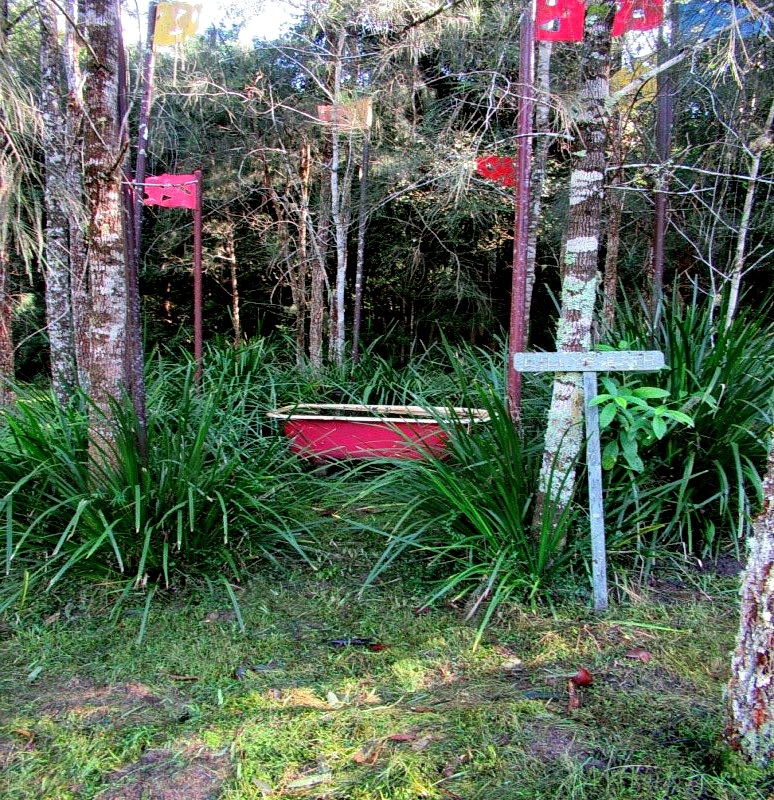We created a living botanic sculpture, in the form of a grove of allocasuarinas, for the black cockatoos.
Planting the living scupture 20 years ago
We planted 56 Allocasuarina torulosa (Forest Oak) in a ’wheel‘ formation with 8 ‘spokes’. The Forest Oak attracts the Red-tailed black cockatoo as this is their preferred food source tree. We used to have many visits of the Red-tailed birds, but less these days.
In a different area, we planted over 100 River Oak, Casuarina cunninghamiana (River Oak) in a wedge formation. These were for the Yellow-tailed black cockatoos, of which we get many.
Ornamenting the living sculpture groves
When the trees were smaller, we built a series of ornamental tin ‘flags’ withshapes cut-out These are ideal for the birds to perch on. We then decided to use an old bath as a centre piece in which we’ve planted water lilies. Then named it “Lilly’s Bath”, as it stands today. Unfortunately winter is not a good time for flowers.
The trees are now about 20 years old and are one of the many feature areas in our 5 acre hilly garden. The garden backs onto 40 acres of native bush. It is surrounded by a creek, a 20 foot waterfall and a river.
Given the threats to our iconic bird species, we’re happy to have created a living sculpture for the cockatoos. We hope this helps in a small way.


About the black cockatoos, from Birdlife Australia
Red-tailed Black Cockatoo
The Red-tailed Black-Cockatoo is a gregarious bird, seen in flocks and also pairs and trios. It is an active, noisy and conspicuous species that is mainly arboreal, spending much of the day feeding, sometimes in a loose association with other black-cockatoos. At sunset, flocks of this species are often seen flying high, returning from feeding areas to roosts in large trees along the banks of rivers or streams.
The South-eastern Red-tailed Black-Cockatoo is listed as ‘Endangered’ and the ‘Forest Red-tailed Black-Cockatoo’ of WA is listed as ‘Vulnerable’.
Yellow-tailed black cockatoo
Yellow-tailed Black-Cockatoos were once content to feed on the seeds of native shrubs and trees, especially banksias, hakeas and casuarinas, as well as extracting the insect larvae that bore into the branches of wattles.
Now, after the establishment of extensive plantations of exotic Monterey Pines, the cockatoos may feed more often by tearing open pine cones to extract the seeds. The population on South Australia’s Eyre Peninsula is now reliant on the seeds of the Aleppo Pine, a noxious weed, as its preferred habitat, Sugar Gum woodlands, has become extensively fragmented.
For more information about native plant societies around Australia, see our website.
 Australian Native Plants Society (Australia)
Australian Native Plants Society (Australia)